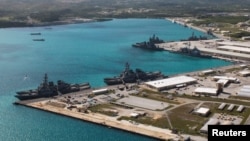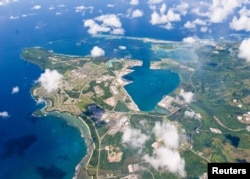North Korea's threat against Guam spotlights a western Pacific U.S. territory that looms large as a military asset, despite being smaller than Singapore.
A former Spanish colony, Guam has been in American hands since the end of the nineteenth century. It is one of 17 non-self-governing territories of the United States.
Guam serves as a major military base for the United States, with U.S. Air Force and Navy installations occupying some 29 percent of the island's total land area. It is also a major hub for submarine communications cables between the western United States, Hawaii, Australia, and Asia.
Guam, with an area of only 544 square kilometers, hosts a military presence of nearly 7,000 military personnel and it is expected to house thousands more in the near future, as the United States moves military assets and personnel currently housed on the Japanese island of Okinawa.
Guam has been a major base for U.S. military aircraft since World War II. The U.S. built an air base on Guam in 1944 to stage its bombing missions to Japan, and has maintained an air and sea presence on the island since.
Andersen Air Force Base on Guam hosts a Navy helicopter squadron and Air Force bombers; it has two three-kilometer runways and large storage facilities for fuel and munitions.
Naval Base Guam is home port for four nuclear-powered fast-attack submarines and two submarine tenders.
Guam's proximity to the Korean peninsula is also what makes it an attractive target for North Korea. Pyongyang is only 3,380 kilometers northwest of Guam, putting it within a feasible striking distance. Tokyo is 2,400 kilometers to the north, and Taipei is 2,700 kilometers to the west.
Guam was an important asset in the Pacific during the Vietnam War, as a base for B-52 bombers headed for missions in southeast Asia. It was also used as a transit point for evacuating Vietnamese refugees.











